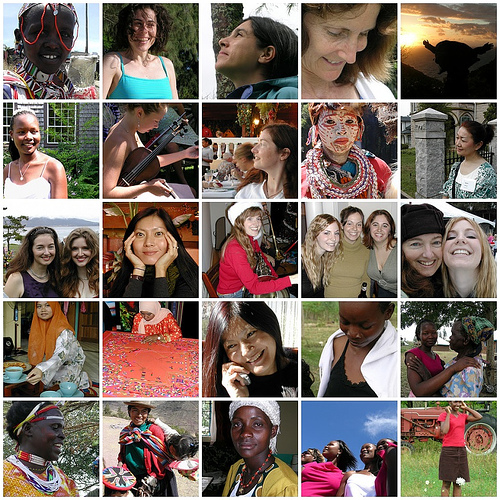When it comes to the gender gap, the United States is in a bad spot. Girls and women make up one half of world's population, yet according to a report released today by the Geneva-based World Economic Forum we don't get treated very well. Out of 134 countries, our democratic nation comes in 31st place behind developing countries like Ecuador (23) and Trinidad and Tobago (19). To be fair, the reports aim is to evaluate "countries on how well they are dividing their resources and opportunities among their male and female populations, regardless of the overall levels of these resources and opportunities."
First presented in 2006, the Global Gender Report reflects the percentage of the gap that has been closed between men and women in four areas of inequality:
1. Economic participation and opportunity - outcomes on salaries, participation levels and access to high-skilled employment2. Educational attainment - outcomes on access to basic and higher level education3. Political empowerment - outcomes on representation in decision-making structures4. Health and survival - outcomes on life expectancy
The Nordic countries, Iceland (1), Finland (2), Norway (3) and Sweden (4) top the Gender Gap Index. That's no big surprise given their progressive behavior when it comes to parental leave and establishing quotas for women in parliament in Norway and Denmark. That's the good news.
The bad news is that no country closes the gap. Despite a strong performance on educational achievement and in health care access, the United States (31) slipped from last year's ranking (27) by four places. Low ranking based on participation of women in the economy and in leadership roles coupled with improvements in the previously lower-ranking countries explains, in part, why women in the United States are far from reaching parity with men. At the bottom of the list, India (114), Bahrain (116), Ethiopia (122), Morocco (124), Egypt (126) and Saudi Arabia (130) all made improvements relative to their rankings last year. This was due mainly to small improvements in the economic participation of women. Iran (128), Turkey (129), Pakistan (132) and Yemen (134), already at the bottom of the rankings, displayed an absolute decline relative to their performance in 2008.
The question is how do we, women and men, mind the gap around the world? "To accelerate progress, we need to recognize the powerful role women and their families have in the economic success of communities and nations," said Christine Grumm by email. Grumm is President and CEO of the Women's Funding Network. "What's more we need to focus attention and investment on the leadership and solutions of women who are closest to critical global challenges such as poverty and inequities in health care. When we (men and women) embrace women-led solutions, nations stand a better chance of reaching their full potential."
We can, and should, do better. If not for us, for our girls and their international sisters.
The report stems from an ongoing collaboration of co-authors Ricardo Hausmann, director of the Centre for International Development at Harvard University, Laura Tyson, professor of Business Administration and Economics at the University of California, Berkeley and Saadia Zahidi, director of the World Economic Forum Women Leaders and Gender Parity Program.
The report is available in full
http://www.huffingtonpost.com/susan-sawyers/mind-the-gender-gap_b_336292.html">here.


